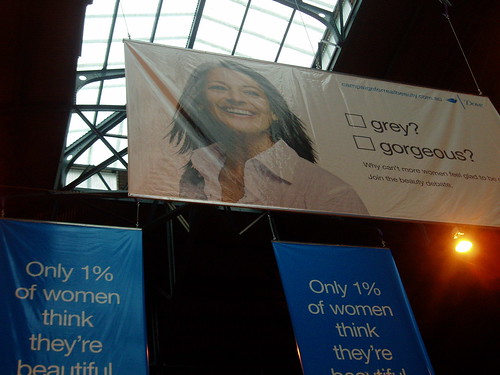On walking through Central Station the other morning, I couldn’t help be struck by the new campaign that Dove (owned by Unilever) have launched, called the ‘Campaign for Real Beauty’. It’s actually an international campaign, but the latest version has just hit Sydney with a high impact plastering of outdoor promotion at one of Sydney’s busiest train stations (and elsewhere, I’m sure).
They describe this as an integrated-marketing campaign that undermines the basic proposition of decades of beauty-care advertising by telling women – and young girls – they’re beautiful just the way they are.
I think this is a smart and intriguing campaign.
Obviously there are a couple of *almost* contradictory objectives:
- to redress the typical beauty-care company media message which is that women are inadequate and require their products in order to become/remain desireable (or even acceptable to society)
- to position ideas of ‘beauty’ that are different to the traditional ideals, as potentially beautiful (thereby desireable)
- to help young girls and women everywhere to embrace a more positive body image (via Dove Self Esteem Fund)
- to grow brand awareness of Dove
- to shift more Dove products.
This is an interesting case study for the problems that FMCG products will face as they attempt to embrace 2.0 advertising. They have a media and marketing literate target audience who will struggle to not see campaigns such as this as a cynical attempt to ‘own’ (and thereby brand) an ‘issue’… so that despite the fact that they may ‘do good’ by growing awareness around these issues, at the same time, we know that they wouldn’t be doing it if they didn’t think it would be effective in growing brand and shifting product. So, it’s not an entirely satisfactory, authentic brand experience, is it?
only 8% of Australian women are satisfied with their facial attractiveness
Source: Dove Global Report
But, back on topic, why might the Dove Campaign for Real Beauty be considered a 2.0 advertising campaign?
Continue reading “Campaign for Real Beauty – 2.0 Advertising from Unilever?” →


